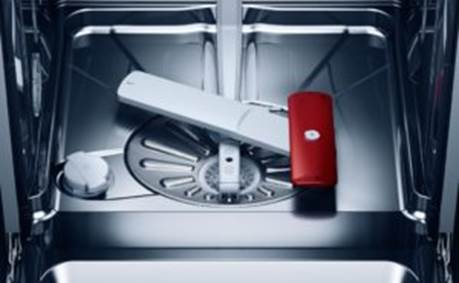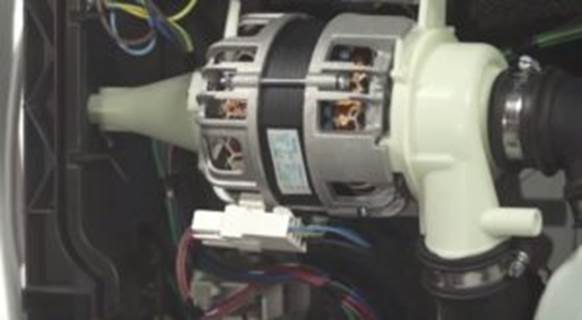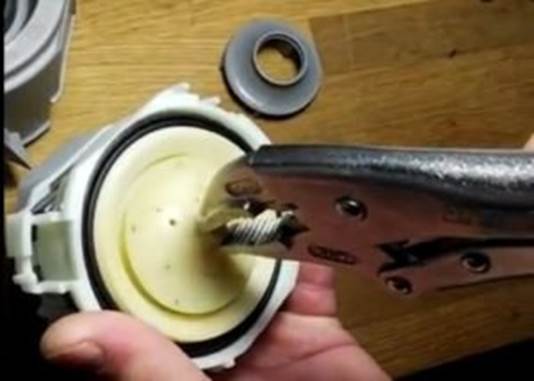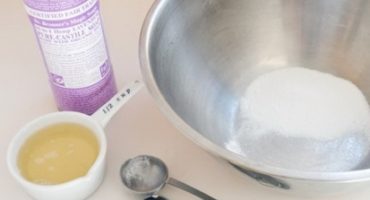As with any household appliance, the dishwasher is intermittent. For example, have you ever noticed that the equipment starts to light or buzz? If the dishwasher is buzzing, do not put off the solution to this problem in a long box. As correct, such sounds indicate that there are serious problems. The machine can either be already broken, or be in a state close to breakdown. You should start by yourself or with the help of wizards to search for the causes of sounds made. Below, we will consider in detail the reasons why the dishwasher is buzzing and how to solve such problems.
How is the dishwasher
In order to properly repair broken equipment, you should carefully study its device. This is the main step in finding solutions to the problem. Finding a dishwasher device layout is quite simple, it will be either in the technical passport or on any website dedicated to such topics. However, in this case we are not considering the scheme of the dishwasher, but the cause and effect of the hum. Typically, a buzz occurs when one of the parts fails. In this case, of course, you have to resort to the help of the circuit in order to easily find the very part that needs repair or replacement with a new one.
Often, a hum occurs as a result of increased pressure in the water pipes. Due to the rapid flow of water and frantic pressure on the walls of the bushings and sockets, a hum begins. Accident and equipment damage may occur.
Pressure can occur due to clogged pipes. The channel can become clogged with particles of food, as well as settling particles of mineral salts and scale. In this case, it is enough to simply clean the clogged parts. If the pressure in the pipes is low, it should be increased using a pump. The circular pump and machine pressure switch must be carefully inspected. If problems are found, it is recommended to clean them, and then wait until the pressure returns to normal and the machine can continue to be used.
To find out why the dishwasher is buzzing, listen when you hear a beep or buzz. Note the cycle time after loading another batch of dishes. You may need to record the time when you hear strange sounds that are not peculiar to a dishwasher.
Approach mechanism
When we open the door of the dishwasher, we find ourselves in the “hopper” - the inside, where there is a niche for inserting a tablet, a stand for dishes, screws and other elements of the device of this item. First of all, remove the shelves for dishes and the dishes themselves from the machine. Next - in order.
- Remove the upper sprinkler and its accessories.
- Thoroughly clean the entire cavity from dirt and litter.
- Next, go to the bottom sprayer.
- Pull out the o-rings with it.
- Most likely, you will need to disconnect the garbage filter for cleaning.
Important! These parts are the most vulnerable throughout the system, so they should be checked especially carefully. They are most prone to clogging and can break the entire machine.

Similar problems are easy to stop. Most often, parts become clogged by food particles entering the component cavity. Before loading dishes into the machine, rinse all solid food debris from plates and pans. This will significantly reduce the risk of clogging of filters and piping.
Pump
Bearing wear for the circular pump causes a breakdown in about half of all cases of malfunction. The bearing is a small graphite ring and is very vulnerable to constant loads on the equipment. Under the condition of everyday use, the maximum bearing life is 2-3 years.

Important! Bearings are much more vulnerable in a new generation of dishwashers than in earlier versions. Consider this circumstance in your plans.
As soon as the bearing life expires, the pump will start to seize, and the machine will make a nasty hum. At first, this fact does not affect the performance of the dishwasher, however, over time, the pump will cope with the task of pumping and supplying water. This means it's time to do hardware repairs.
The pump is repaired as follows:
- Unplug the machine
- Remove the sump to get to the pump
- Unscrew the clamps and remove the chip
- Carefully disconnect the pump from the wiring and pull it out.
Done. you can start disassembling.
- Carefully disconnect the unit with the heater. Keep in mind that it is well bolted and in order to remove it, you will have to make an effort. Try not to damage anything when removing the part, be careful.
- After removing the impeller, pull out the anchor with pliers or tongs
Done! You got to the bearing. Now you should carefully remove it, preferably with tweezers. We have to check the integrity of the rubber gasket. When the gasket wears out, it loses its elasticity, and a powdery coating forms on the surface. Since the gasket is made of rubber, most likely it will be intact, but in any case the bearing will have to be replaced. Done! Now you can assemble the machine in the reverse order.

Drain pump
It so happens that checking the pump for the cause of a machine breakdown gives a negative result. If the buzz occurs when there is a discharge of water, then the matter is in the drainage pump, the spare part responsible for the spillway after the end of the cycle. The dishwasher beeps due to the increased load on the drain. The equipment runs to the limit of its capabilities and cannot complete the cycle normally. If under other conditions the machine does not make any extraneous sounds, then you have to disassemble the pump to find out the causes of malfunctions in the mechanisms.

You can remove the pump by putting the dishwasher on its side and unscrewing the tray. The pump is held by means of gaskets on the clamps. The main thing in this business is not to lose the pump and seals, as important components for a dishwasher.
Most likely, the case is in violation of the impeller. Remove it immediately. After put a new one. Now the pump will work as before. The main thing is to observe the correct procedure for the reverse collection of the dishwasher. Now the system is updated and will work even better than before.
However, there is a more reliable option: replace the entire pump. This spare part is inexpensive, so do not worry about the likelihood that you will have to change the entire pump.
Conclusion
We examined the main causes of hum in the dishwasher. A dishwasher, like any other piece of household equipment, requires a careful attitude, so try to be careful when assembling and disassembling the equipment so as not to damage anything, thereby complicating the task of fixing the dishwasher.
On our site you can also find out how decode the e24 indicator on the display.
Also, for safety reasons, do not forget to use water softeners, since in many regions tap water has excessive hardness, which leads to scale formation and ultimate damage to the machine, taking into account the spillway clogging.



